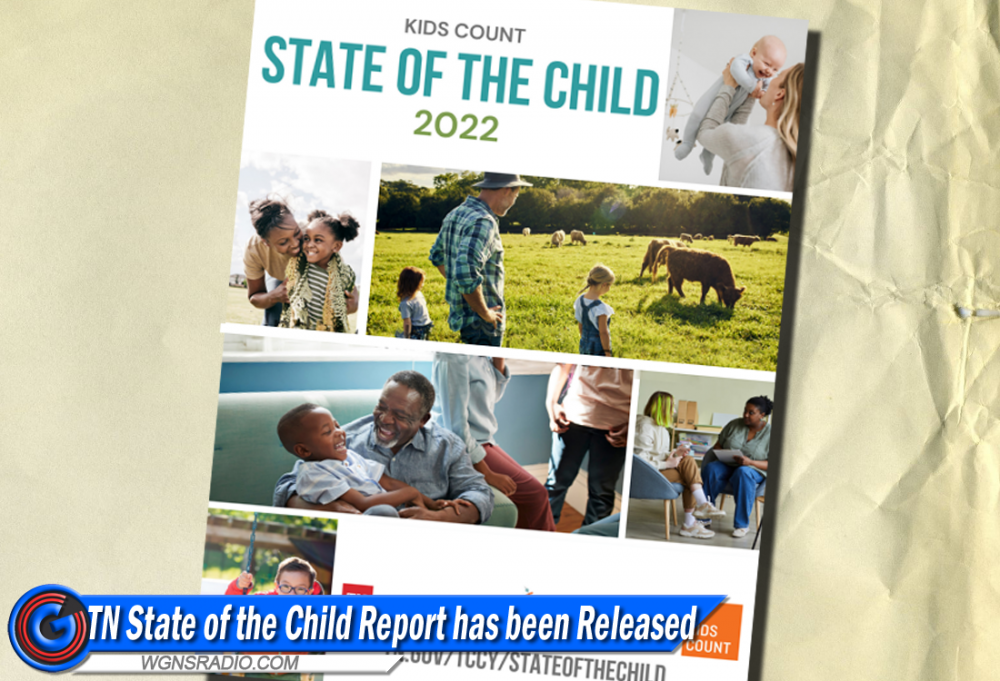Tennessee’s children and their caregivers continue to face significant challenges but increasing investment provides a path forward toward improved outcomes, according to The State of the Child 2022, an annual report released by the Tennessee Commission on Children and Youth. This year’s release evaluates the most recent available data on child well-being in economics, education, health, child welfare and youth justice.
The State of the Child report examines post-pandemic indicators of well-being to evaluate how Tennessee children are doing, what supports have worked and how we can continue to invest in programs that improve outcomes for all children, youth and families. As with many children across the nation, Tennessee's children saw declines in their mental health and educational outcomes over the last two years. The report also shows many parents continue to struggle to find care for their young children.
Tennessee saw an historic improvement in the number of children living in poverty with a decline that outpaced the country as a whole. Between 2019 and 2021, the percentage of children living in poverty declined by 8 percent. Poverty among those under 5 decreased by 18 percent. Certain counties, particularly rural counties, saw even more significant declines. Bledsoe and Sequatchie counties saw overall child poverty decline by 29 percent and 26 percent respectively.
Despite these improvements, Tennessee households with children still face significant financial challenges. In September 2022, 23 percent of Tennessee households with children reported sometimes or often not having enough to eat in the previous week. During that same period, 53 percent reported having difficulty paying for usual expenses. Nationally, those figures were 14 percent and 47 percent respectively.
High housing costs have continued to burden Tennessee families. More than one in four Tennessee children live in a household spending over 30 percent of their monthly income on rent or mortgage. Among lower-income households, that number increases to more than 3 out of 4. When households experience a high housing cost burden, they are less likely to have enough resources to cover food, clothing, medical expenses and other needs. In January 2022, one in four households with children had little or no confidence in their ability to make their next housing payment on time.
You can see the full report on the wellbeing of children in Tennessee HERE.
National data shows that expanded non-cash benefits provided to families have been critical in supporting our children. The Child Tax Credit lifted 2.91 million children out of poverty in 2021. Other programs like the 3rd stimulus payment lifted 2.27 million children out of poverty and SNAP had the same impact on 891,000 children. Across the nation, the Supplemental Poverty Measure, which considers these non-cash benefits, decreased from one in eight children in poverty in 2019 to one in 20 in 2021.
“Creating communities where all children have access to the resources, supports and services they need to thrive is a critical component of child well-being and our success as a state,” said Richard Kennedy, executive director of the Tennessee Commission on Children and Youth.
Although mental health challenges among youth and teens in Tennessee have a similar or lower prevalence than their national counterparts, the state falls far behind in terms of those children receiving needed treatment. Tennessee ranked 47th in the nation in the percentage of youth with a major depressive episode who did not receive mental health care, 71.1 percent of youth in Tennessee compared to 60 percent nationally. Among those with severe major depressive episodes receiving consistent treatment, Tennessee ranked 46th. Youth across the nation are twice as likely to receive treatment, and in the best-performing state four times as likely to receive treatment, compared to youth in Tennessee.
One of Tennessee’s greatest responsibilities is to care for and support children that have experienced abuse or neglect. Tennessee struggles with foster care instability at a level not seen across the rest of the country. Tennessee has had the highest rate of foster care instability in the nation every year from 2016 to 2020. In the most recent data, Puerto Rico was the state or territory that came closest at 26 percent compared to Tennessee’s 34 percent.
Among our youngest Tennesseans and their mothers, there continue to be opportunities for improvement. In 2020, all types of maternal mortality increased. One in seven infants in Tennessee was born premature, ranking Tennessee 49th out of 51. Additionally, Tennessee ranks 42nd in infant mortality. Care for infants and young children is becoming increasingly hard to find and cost-prohibitive. The cost of center-based care for an infant and 4-year-old in Tennessee is 81 percent higher than the average annual rent across all housing types in the state at $19,539 compared to $10,764.
The report shows how additional state and federal intervention can build resilience and support the health and well-being of families with children. Increased investment in our children, youth and families can prevent these challenges or mitigate the negative effects. The choices we make to address children’s needs and support their development will determine our state's future health, economic and community success.





